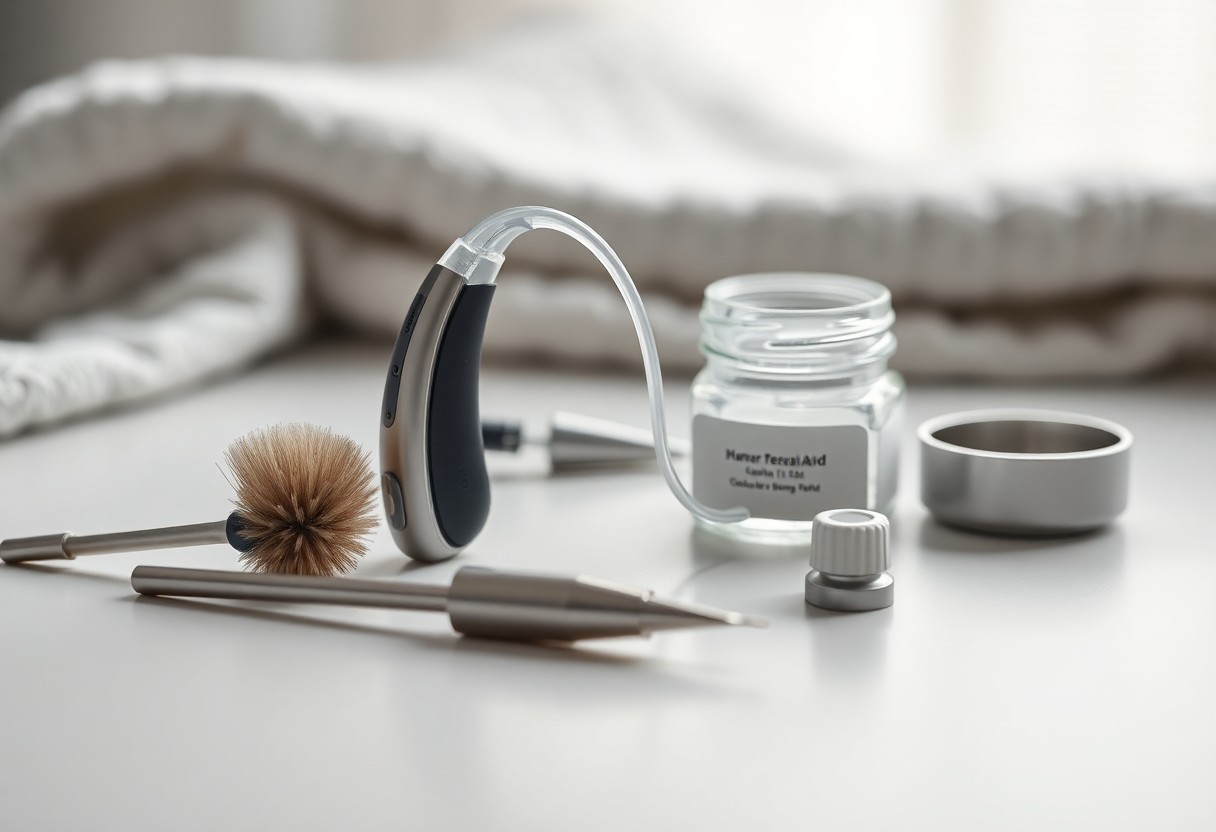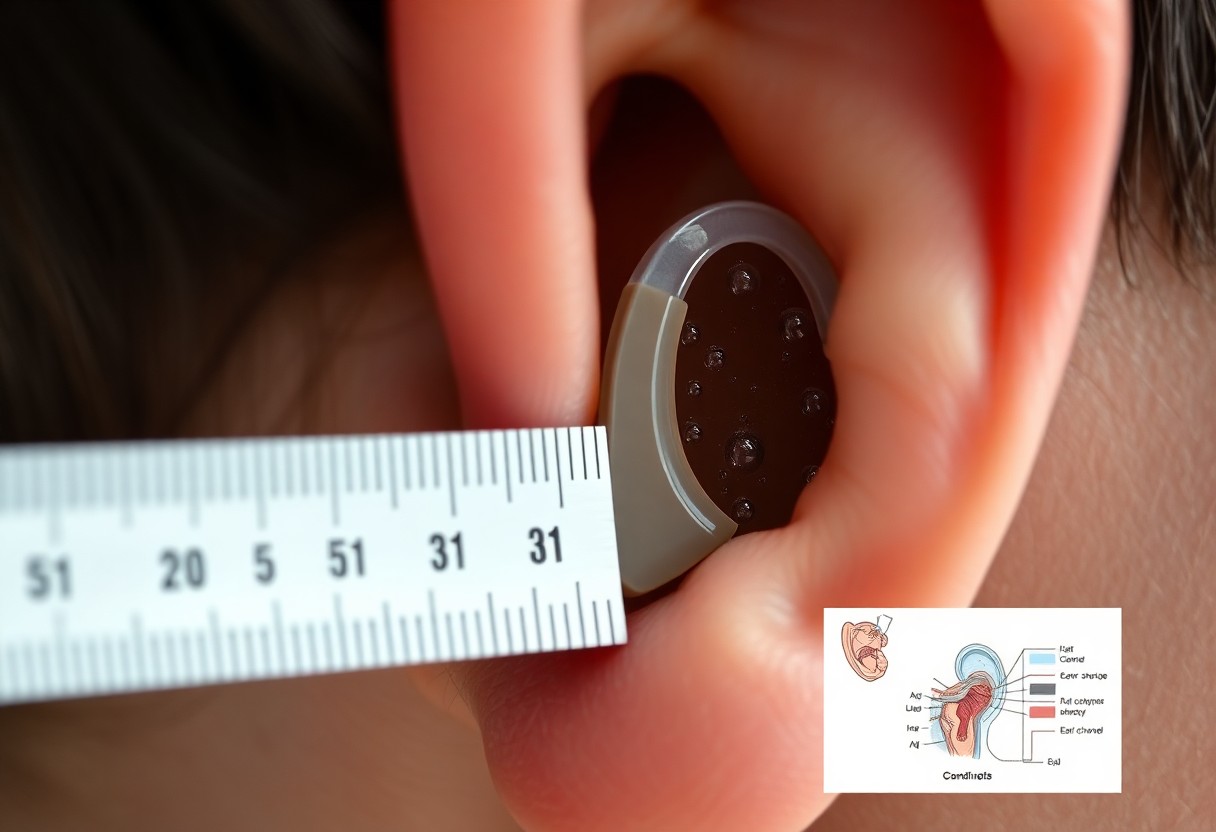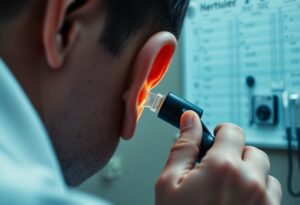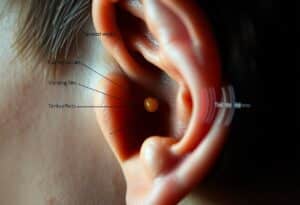Performance issues with your hearing aid can often be traced back to cerumen blockage. This common problem arises when earwax accumulates, potentially interfering with your device’s effectiveness. Understanding how earwax impacts your hearing aids is crucial for ensuring optimal sound quality and functionality. By addressing cerumen buildup, you can preserve your hearing aid’s performance and enhance your overall listening experience.
Key Takeaways:
- Cerumen, or earwax, can hinder the effectiveness of hearing aids by blocking sound pathways.
- Regular cleaning of both ears and hearing aids can prevent cerumen buildup and maintain optimal performance.
- Consulting with an audiologist can provide solutions for managing earwax and ensuring hearing aid function.
The Silent Saboteur: How Cerumen Affects Hearing Aid Functionality
The Role of Cerumen in Ear Health
Cerumen, or earwax, plays a vital role in your ear health by protecting the ear canal from dust, debris, and microorganisms. This natural substance also helps to lubricate the skin of the ear canal and provides a barrier that prevents infections, ensuring your auditory system remains functional. While cerumen is beneficial in moderation, excessive buildup can lead to complications, particularly for hearing aid users.
The Mechanism of Impact on Hearing Aids
Cerumen blockage can significantly impede your hearing aid’s performance by obstructing sound pathways. When earwax accumulates, it can trap sound waves and create feedback issues, diminishing amplification and clarity. Furthermore, it may lead to discomfort or irritation as the aid interacts with the cerumen buildup, ultimately affecting your overall hearing experience.
To illustrate, consider a situation where earwax obstructs the microphone of your hearing aid. This blockage not only alters sound quality but may also force you to increase the volume, inadvertently causing further damage to your hearing. Regular maintenance and cleaning of your hearing aids, including addressing cerumen buildup, are necessary practices to avoid these issues, ensuring your device operates at peak performance.
The Signs and Symptoms of Cerumen Blockage
Auditory Anomalies: What to Listen For
You may notice muffled sounds or difficulty in understanding speech if cerumen is blocking your ear canal. This sensation often accompanies a feeling of fullness in your ears, resulting in an overall diminished auditory experience. In some cases, you might hear a hissing or popping noise, indicating that the pathway is partially obstructed and your hearing aid is not functioning optimally.
Other Indications of Blocked Earwax
In addition to auditory changes, various other signs can suggest a blockage of earwax. You might experience discomfort, itching, or even pain in your ear. Additionally, sudden episodes of dizziness or a sense of imbalance can also be indicative of a cerumen buildup, as this can affect your body’s equilibrium.
Redness or swelling around the ear canal can point to irritation caused by trapped earwax. Sometimes, a foul odor may emanate from your ear, signaling an infection that could stem from prolonged cerumen buildup. Keep an eye out for drainage or fluid leaking from your ear as well; these symptoms can intensify the danger of further complications if left unaddressed. Prompt attention to these signs can help you maintain proper ear health and ensure your hearing aid performs at its best.
Identifying the Culprits: Who is at Higher Risk?
Age-Related Factors
As you age, the consistency and production of cerumen can change, making earwax buildup more likely. Older adults often produce drier, harder earwax that can block the ear canal, particularly if hearing aids are worn. Regular maintenance of ear hygiene becomes important to manage this risk effectively.
- Older adults experience changes in cerumen consistency.
- Hearing aid users may experience increased accumulation.
- Age-related conditions can affect earwax removal capabilities.
This makes regular checks and cleaning appointments vital to maintain optimal hearing aid performance.
Lifestyle and Environmental Influences
Your lifestyle choices and environment significantly impact cerumen buildup. Frequent exposure to dusty or polluted environments can stimulate excess earwax production. Additionally, activities such as swimming or wearing earplugs can contribute to wax trapping, which necessitates proactive care to prevent obstruction of your hearing aid.
For example, if you often partake in recreational swimming, the moisture can mix with cerumen, leading to a thickened consistency that clogs the ear canal. Similarly, individuals in dusty fields or manufacturing environments may find they need to manage ear health more diligently. Prioritizing regular ear hygiene and seeking professional cleaning can help mitigate these lifestyle-related risks.
The Cerumen-Device Connection: How Blockage Impairs Performance
Performance Degradation: Sound Clarity and Volume
Cerumen buildup can significantly diminish the performance of your hearing aid by obstructing sound pathways. This blockage often leads to muffled audio, making conversations frustratingly unclear. You may find it challenging to distinguish speech from background noise, and the overall volume may appear lower than what you’re accustomed to. Regularly checking for earwax accumulation ensures optimal clarity and volume, enhancing your listening experience and communication effectiveness.
The Impact on Device Longevity
Cerumen buildup affects not only sound quality but also the longevity of your hearing aid. When wax clogs the device, it can create moisture retention and heat buildup, damaging internal components. Without proper maintenance, you might face costly repairs or an earlier need for a replacement. Investing time into regular cleaning and checks can prolong your device’s life, allowing you to avoid unnecessary expenditures.
Frequent cerumen obstruction may lead to corrosion or malfunction of sensitive parts within your hearing aid. Studies show that devices subjected to moisture and heat tend to show wear approximately 30% faster than those kept clean. By implementing regular cleaning routines and utilizing protective accessories, you can significantly extend the lifespan of your hearing aid, ensuring consistent performance and reliability over time.

Cleaning and Maintenance Solutions for Hearing Aids
Professional Cleaning Options
Visiting an audiologist or hearing aid specialist for professional cleaning ensures that your device receives thorough maintenance. Experts utilize specialized tools and techniques to remove cerumen and other debris, often providing a deep clean that goes beyond what you can achieve at home. Scheduling these cleanings every six months can prolong the lifespan of your hearing aids and significantly enhance their performance.
At-Home Care: Best Practices for Users
Regular at-home care involves simple techniques that can prevent cerumen buildup and maintain optimal functionality. Cleaning your hearing aids daily with a soft, dry cloth helps remove any surface dust or wax. Additionally, using a wax guard can act as a barrier against cerumen entering the device, while keeping it dry and storing it in a safe, designated place will minimize exposure to moisture and dirt.
Incorporating a consistent cleaning routine can make a substantial difference in the performance of your hearing aids. Start each day by inspecting your devices for any visible wax and gently wipe them down before wearing. Most hearing aids come with specific cleaning tools, such as brushes or picks, that you can use to target hard-to-reach areas. Utilizing a dehumidifier at night can further prevent moisture buildup, which is vital for longevity and sound quality. Regular attention to these details can greatly improve your listening experience.
Preventative Measures to Avoid Future Blockage
Regular Ear Health Check-ups
Scheduling regular ear health check-ups with your healthcare provider can help catch cerumen buildup early. These visits allow professionals to examine your ears and remove excess wax before it impacts your hearing aid’s performance. Depending on your individual risk factors, such check-ups could be recommended every six months to a year, ensuring optimal ear health and device functionality.
Effective Cleaning Techniques for Wax Control
Implementing effective cleaning techniques is vital for maintaining ear canal health and preventing wax buildup. Using a soft, damp cloth to clean around the outer ears and avoiding cotton swabs deep within the canal can help you manage cerumen levels. You might also consider using ear drops formulated to soften wax, making it easier for natural processes or professional cleaning to remove it.
Specific techniques include using a bulb syringe with warm water to irrigate the ear gently, which can help dislodge stubborn wax. Some people benefit from using over-the-counter products containing carbamide peroxide, designed to soften and break down earwax buildup. Always consult with a healthcare professional before trying new methods to ensure they’re appropriate for your individual situation. Each person’s ear anatomy and cerumen production can differ significantly, necessitating a tailored approach for effective wax control.
The Expert Take: When to Consult an Audiologist
Signs You Should Seek Professional Help
Experiencing muffled sounds, frequent feedback from your hearing aid, or persistent discomfort in your ear signals that it’s time to consult an audiologist. Additional red flags include difficulty following conversations in noisy environments or visible wax buildup in your ear canal. If you notice any of these issues, addressing them promptly can help prevent further complications with your hearing aid performance and overall hearing health.
What to Expect During an Audiology Appointment
During your appointment, an audiologist will conduct a thorough examination of your ears, including visual inspection and hearing tests to assess any potential issues. They may also evaluate your hearing aid to identify any performance challenges stemming from cerumen blockage or other factors.
After an initial evaluation, the audiologist will likely use specialized tools to remove any excess wax safely and will provide guidance on proper hearing aid care and maintenance. They might recommend adjustments to your device and, in some cases, suggest a hearing test to determine if further intervention or adjustments are necessary. Your audiologist’s expertise will help you get the most out of your hearing aid, ensuring optimal performance and comfort.

User Experiences: Personal Stories of Dealing with Cerumen Issues
Overcoming Challenges: User Testimonials
Your experiences can resonate with others facing similar issues. Many users share stories about how regular maintenance of their hearing aids and timely ear cleaning have transformed their auditory experience. For instance, one user reported that consistent visits to their audiologist helped eliminate frustrating sound distortions, allowing them to fully engage during conversations once more. Such testimonials highlight the impact proactive measures can have on optimizing hearing aid performance.
Learning from Mistakes: Common Misconceptions
Misunderstandings surrounding earwax and hearing aids can exacerbate issues. A prevalent misconception is that once you have a hearing aid, earwax accumulation is no longer your concern. In reality, keeping your ears clean is as important as maintaining the device itself. Users might believe that frequent cleaning is unnecessary, leading to more significant challenges with sound quality and device functionality.
A common error among users is not seeking help until the cerumen buildup significantly interferes with hearing. Many hold off on cleaning techniques, thinking they can manage on their own. This often leads to more substantial blockages and expensive repairs. Studies show that regular ear care should be part of your hearing management plan. Understanding that cerumen buildup can affect device performance can help in making informed decisions about routine maintenance.
Final Words
Taking this into account, cerumen blockage can significantly affect your hearing aid’s performance. If you experience reduced sound quality or feedback, consider checking for earwax buildup. Regular cleaning and maintenance of both your ears and hearing aids can enhance their function. Being proactive about cerumen management ensures optimal hearing and prolongs the life of your device.
FAQ
Q: Can cerumen blockage affect hearing aid performance?
A: Yes, cerumen blockage can significantly hinder hearing aid performance by obstructing sound transmission and amplifying feedback.
Q: How can I tell if cerumen is blocking my hearing aid?
A: Common signs include reduced sound quality, muffled sounds, or feedback noises, indicating that cerumen may be obstructing the device.
Q: What should I do if cerumen is blocking my hearing aid?
A: Consult with an audiologist or hearing care professional for ear cleaning and device maintenance to restore optimal performance.
Q: How can I prevent cerumen blockage with my hearing aid?
A: Regularly clean your ears and hearing aid according to manufacturer instructions, and consider using earwax guard filters to reduce buildup.
Q: Is cerumen blockage a common issue for hearing aid users?
A: Yes, cerumen buildup is a frequent concern among hearing aid users, requiring ongoing maintenance and vigilance to ensure effective performance.



